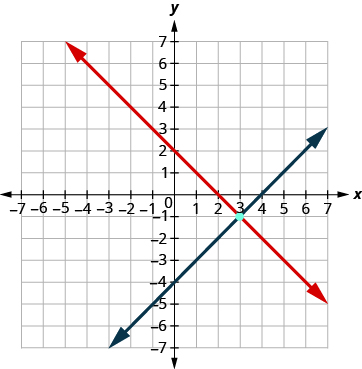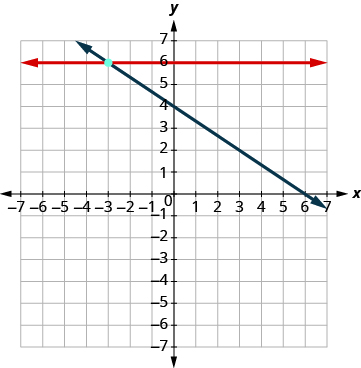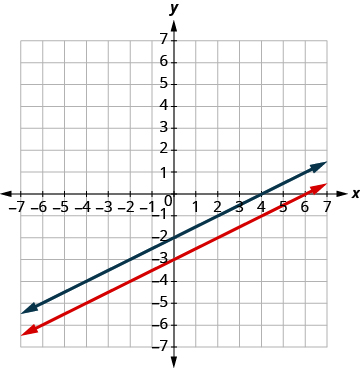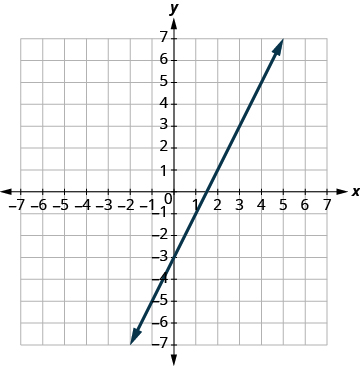| << Chapter < Page | Chapter >> Page > |
Usually when equations are given in standard form, the most convenient way to graph them is by using the intercepts. We’ll do this in [link] .
Solve the system by graphing:
We will find the x - and y -intercepts of both equations and use them to graph the lines.
 |
||
| To find the intercepts, let
x = 0 and solve
for y , then let y = 0 and solve for x . |
 | |
 |
||
| To find the intercepts, let
x = 0 then let y = 0. |
 | |
| Graph the line. |
 |
|
| Determine the point of intersection. | The lines intersect at (3, −1). | |
| Check the solution in both equations. |
The solution is (3, −1). |
Do you remember how to graph a linear equation with just one variable? It will be either a vertical or a horizontal line.
Solve the system by graphing:
 | |
| We know the first equation represents a horizontal
line whose y -intercept is 6. |
 |
| The second equation is most conveniently graphed
using intercepts. |
 |
| To find the intercepts, let x = 0 and then y = 0. |
 |
| Graph the lines. |
 |
| Determine the point of intersection. | The lines intersect at (−3, 6). |
| Check the solution to both equations. | |
| The solution is (−3, 6). |
In all the systems of linear equations so far, the lines intersected and the solution was one point. In the next two examples, we’ll look at a system of equations that has no solution and at a system of equations that has an infinite number of solutions.
Solve the system by graphing:
 | |
| To graph the first equation, we will
use its slope and y -intercept. |
 |
 | |
 | |
| To graph the second equation,
we will use the intercepts. |
 |
 | |
| Graph the lines. |
 |
| Determine the point of intersection. | The lines are parallel. |
| Since no point is on both lines, there is no ordered pair
that makes both equations true. There is no solution to this system. |
Solve the system by graphing:
 | |
| Find the slope and
y -intercept of the
first equation. |
 |
| Find the intercepts of the second equation. |
 |
 | |
| Graph the lines. |
 |
| Determine the point of intersection. | The lines are the same! |
| Since every point on the line makes both equations
true, there are infinitely many ordered pairs that make both equations true. | |
| There are infinitely many solutions to this system. |
If you write the second equation in [link] in slope-intercept form, you may recognize that the equations have the same slope and same y -intercept.
When we graphed the second line in the last example, we drew it right over the first line. We say the two lines are coincident. Coincident lines have the same slope and same y -intercept.

Notification Switch
Would you like to follow the 'Elementary algebra' conversation and receive update notifications?